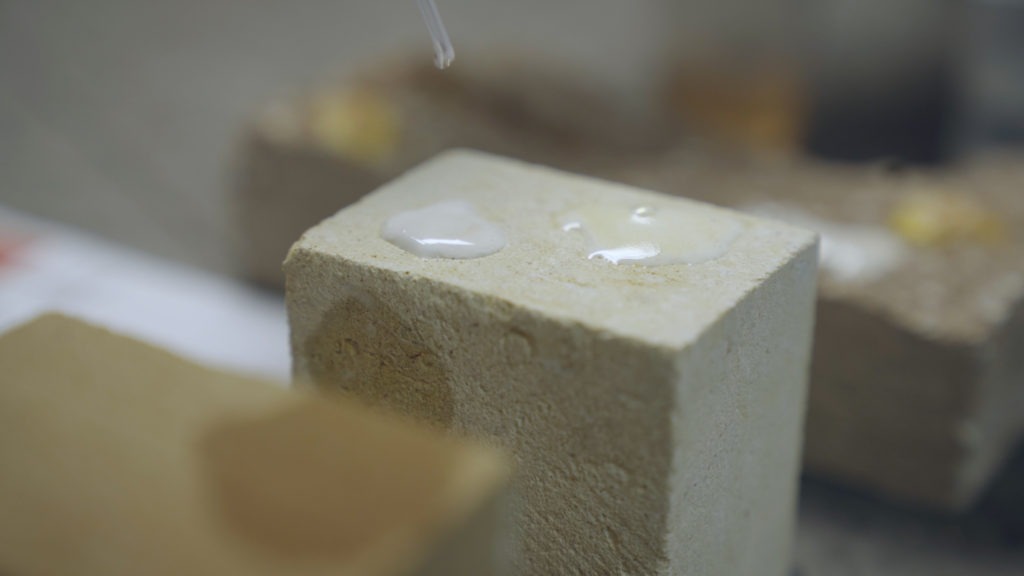The Truth About Acid Is A Matter Of Safety
Words and Photos: PROSOCO
When many people think of the word acid, a variety of images may spring to mind. Some of them might be dramatic – like the scene from Alien V. Predator where acid-ladled spit melts through everything.
While that scene is certainly memorable, the truth about acid when it comes to cleaning your masonry surfaces is that it doesn’t have to be scary. In fact, the more you understand about the chemistry of your masonry cleaners, the safer your job site is – for both you and your crews.
Certain marketing claims might use the fear of acid against professionals and consumers alike by using clever phrasing (more on that later), but that only serves to misguide users and can actually cause them to not take the appropriate safety measures around these substances.
“A lot of people don’t realize that acid is everywhere around us,” says Jake Boyer, head of PROSOCO’s Clean and Protect line of products for hard surfaces. “For example, our stomachs are full of gastric acid, which is primarily comprised of hydrochloric acid.”
“The thing that people need to understand is that acid is really a necessary component in order to do something such as dissolving an alkaline material like a mortar smear.”
If you took chemistry in high school, you might remember it all comes down to the pH scale, which goes from 0 to 14. The acidic side is on the lower end of the scale (from 0 to about 7) and the alkaline side is on the higher end (about 7 to 14.) The pH of acids used on new construction cleandown, including removal of mortar smears and general soiling, are going to be on the lower end or the acidic side of the scale. Hydrochloric acid can run anywhere from 0 to 1 based on its concentration.
Why is acid necessary in new construction cleandown and, specifically, the removal of mortar?
Chris Moore, PROSOCO’s R&D Chemist, explains: “Mortar is made up with materials like calcium silicate hydrate, which is the cement that has been cured, as well as calcium hydroxide. Calcium hydroxide is an alkaline material. In order to break that bond, you need something acidic to break that apart and loosen the mortar from the surface.”
Jake and Chris recently set up a demonstration with two acidic masonry cleaners during a visit with MCAA Editorial Director Dan Kamys. The objective was to illustrate the marketing behind some acidic masonry cleaners that shy away from calling themselves acidic – they may use terms like a synthetic acid or a detergent-based cleaner. But it’s still the acid doing the bulk of the masonry cleaning work – and you can find the pH level of a cleaner by checking the safety data sheet.
Both cleaners in the demonstration are acidic. One is a traditional new masonry cleaner, and the other is marketed as a “detergent,” “synthetic acid,” or even a “non-acid acidic cleaner.” See what happens when a small drop of each product is applied to the substrates of concrete block, limestone, and sandstone.
 Both Cleaners On Concrete Block
Both Cleaners On Concrete Block
 Both Cleaners On Limestone
Both Cleaners On Limestone
(Hint: The “detergent-based cleaner” produces the same foaming action as the cleaner appropriately branded as acidic.) Why would a simple detergent produce this result?
Chris cuts through the marketing here: “All of these types of cleaners have detergents in them. Detergent is just another word for surfactant or soap. And that is great to have because it helps with wetting the substrate as well as the rinsing step. But unfortunately, (detergents) don’t do anything to remove mortar. You have to have that acid there to dissolve that bond to dissolve the mortar off the surface.”
Chris and Jake lamented the approach of using fear-oriented marketing and wished more manufacturers would be straightforward about what is in their cleaners. Because if you don’t think a cleaner has acid in it, you won’t be as likely to use the proper PPE, thus leading to uneducated, hazardous work conditions.
Jake says this tactic of calling a masonry cleaner “detergent-based” is like calling a vodka soda a “water-based drink.”
“It’s not the water you’re there for. It’s the vodka,” he says. “As far as these acidic materials go, you do need to take the proper safety precautions. The reason I bring that up is that when products are marketed as detergent-based, you may not take those safety precautions. If they’re marketed appropriately as an acidic cleaner, then you’re going to know right out of the gate that I need to take these particular safety precautions. That may be a respirator or gloves, and at the least, safety glasses.”
“Provided those safety precautions are taken, these products are safe and the most effective way to achieve the task at hand. You just need to know exactly what it is that you’re dealing with.”